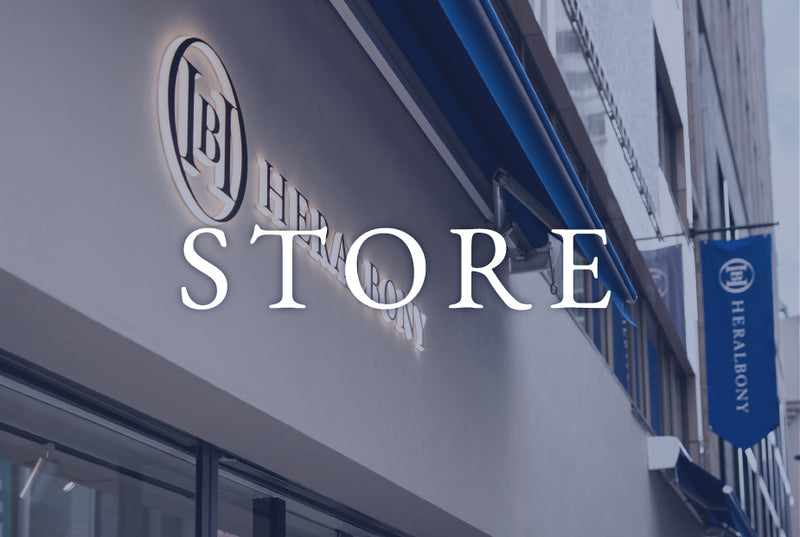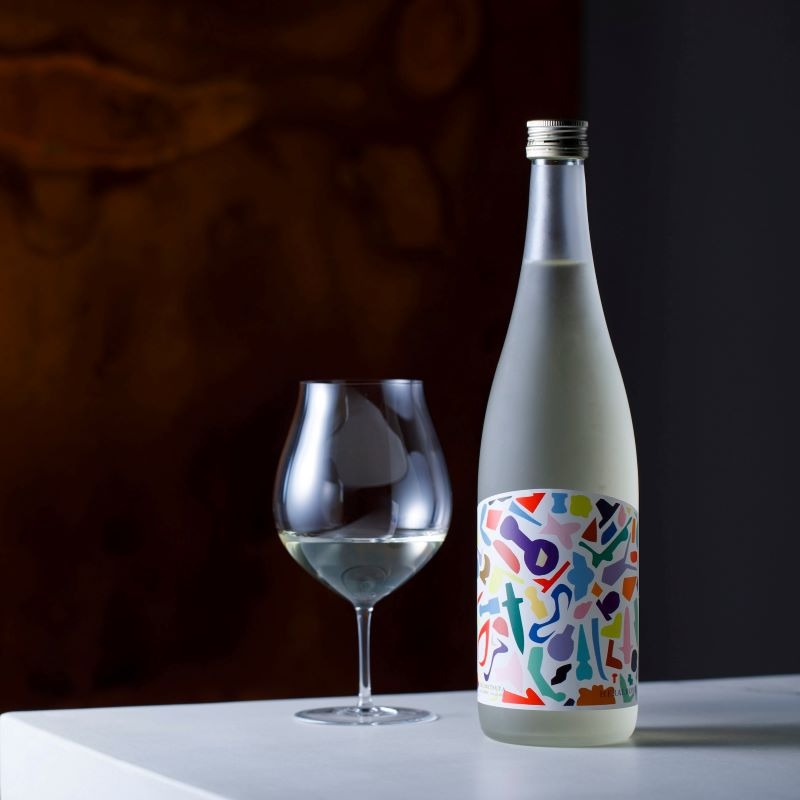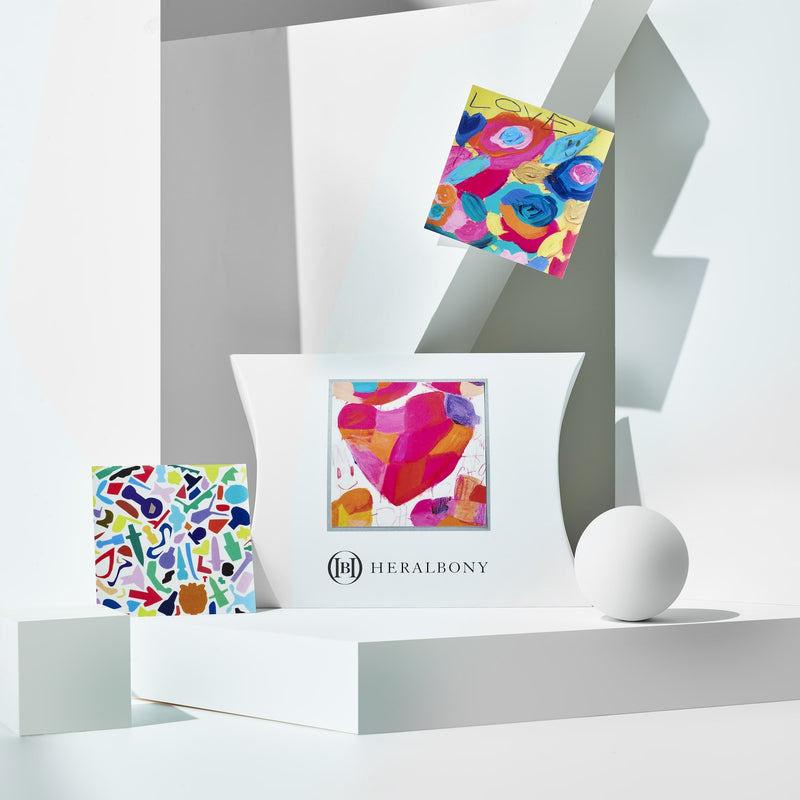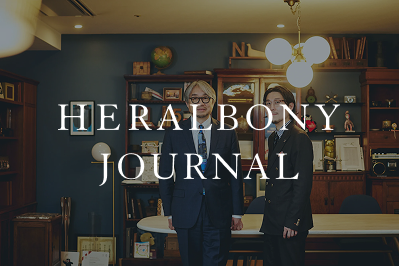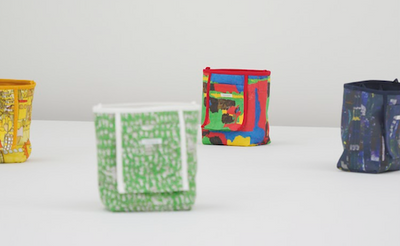Overcoming the fear of revealing yourself: Miyu Morita aims for a "heart-first" lifestyle [Part 1]
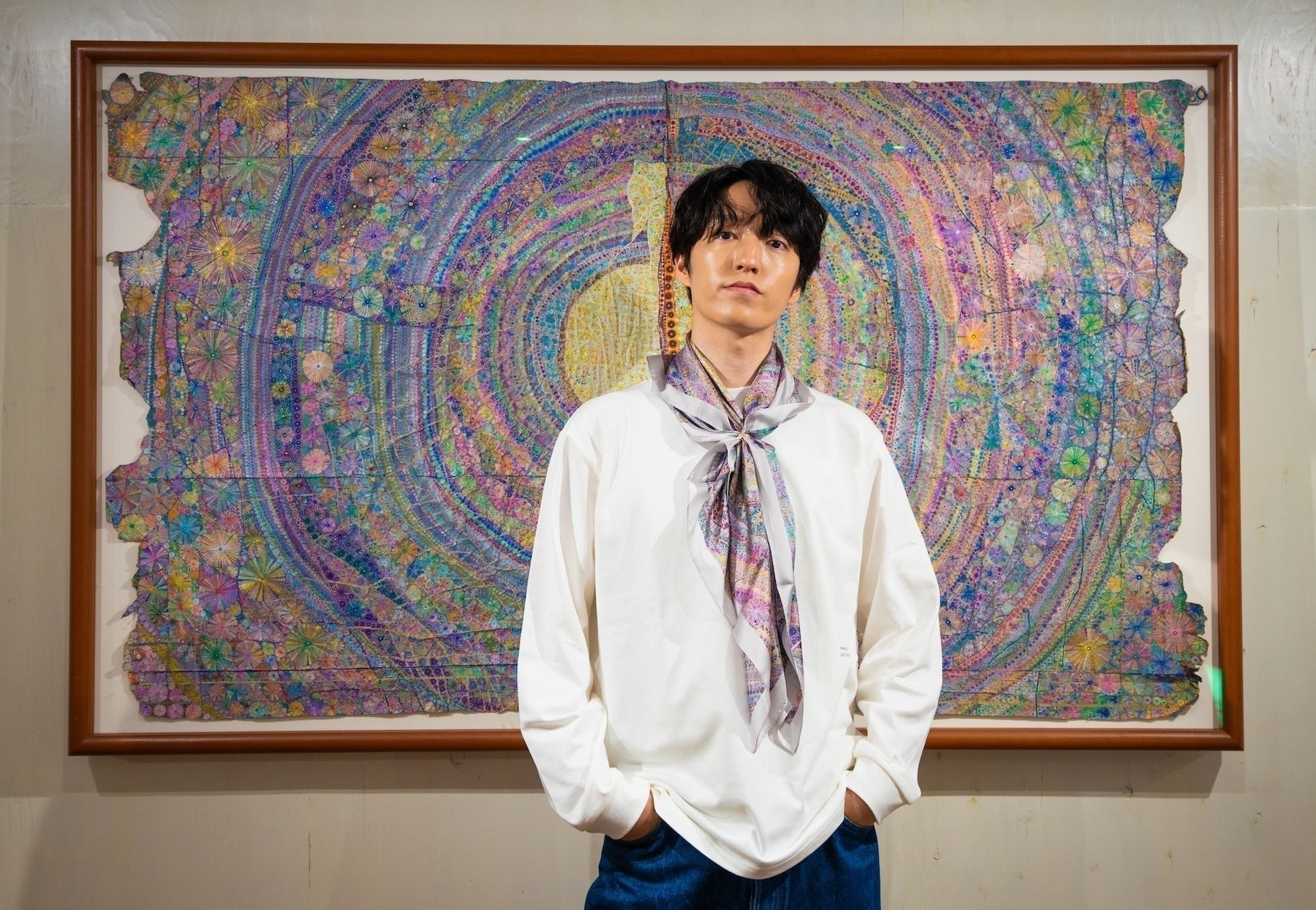
"HERALBONY & PEOPLE" is a series where we interview people who support HERALBONY. In this series, we interview people from all walks of life who regularly resonate with HERALBONY's activities and business.
This time, we will be featuring Miyuto Morita, who is an artist who expresses himself through music and art, as well as serving as the director of " FLATLAND ." Morita entered the entertainment industry at the age of nine, and after honing his skills as a professional artist, he went independent. In 2021, he launched "FLATLAND," a project that gives shape to his own ideas, and has expanded his activities to a wide range of fields, from music to fashion and art.
Morita wore a long-sleeved T-shirt featuring a collage of art by Iguchi Naoto, an artist who creates works using a copy machine, paired with a "Hyouka" scarf (not for sale) by Asano Haruka, the HERALBONY Art Prize 2024 Grand Prize winner. Morita's disabled younger brother had a major influence on his way of life and his stance. Morita, who also creates art himself, says that it was the energy of the works and artists that first drew him to HERALBONY. In this two-part series, we will explore Morita's roots and way of thinking.
>> Morita-san is wearing the following item: Long-sleeved T-shirt "Untitled" (B)
I was enveloped in a sense of happiness as I experienced the artist's pure expression.

---We are very happy that you are interested in HERALBONY's activities and support us. First of all, could you tell us how you first found out about HERALBONY?
Miyuto Morita (hereafter, Morita): I've always loved art, and I paint abstract paintings myself. One day, a friend introduced me to a genre called Art Brut (*1), which sparked my interest. HERALBONY was already well-known at the time, so the name naturally came up in conversations with my friends. As I continued to research the company, I learned about Atelier Yamanami (*2) and became interested in the artists who worked there. I was curious to know what kind of people were creating the artworks, so I visited the studio last year.
*1 Art created by people who have not received specialized art education, and who express the impulses that well up from within themselves. The term means "raw art" in French.
*2 Yamanami Studio: A welfare facility located in Koka City, Shiga Prefecture. It has produced many artists who have attracted attention both from within Japan and overseas. Many artists are contracted with HERALBOY, and HERALBOY JOURNAL previously interviewed the facility's director, Masakazu Yamashita.
>> An interview with the director of Yamanami Kobo, a welfare industry legend who explains why he can fully accept people
---Did you gain any realizations from interacting with the artists in the workshop?
Morita: There were many. I could sense energy and power from the works and the artists. When I saw the pure expression, I was overcome with a sense of happiness, thinking, "Ah, this is a happy place." As a person, I have never openly expressed my inner self until now. I was moved by the attitude of the people in the studio, who were simply enjoying art, and it stimulated my curiosity.
It takes courage to expose yourself

---I worked with Heralbony on the "Unique Day (January 31st)" SNS project.
Morita: The theme of the project was "What is your 'difference'?" It was a short but striking catchphrase. I think that's a very Heralbony-esque thing to say (laughs). I felt the "sharpness of the plan" that only Heralbony has, with its ability to create buzz. I was happy that they reached out to me as one of the "outliers," without being bound by the boundaries of disability or able-bodiedness.

>> Morita's Instagram post for "Unusual Day" can be found here
---I was impressed by the words that Morita carefully wove together.
Morita: I wrote a story about how "I can't fit in anywhere." I'm not very good at talking about myself, so if possible, I'd like to blend in with the people around me without letting them know how I feel. But when someone asked me, "What's the difference?" I had to answer (laughs). When I actually shared it, I got a surprising reaction.
Some people were surprised, saying, "I thought you were more of a cheerful person," while others said, "That's just like you." For me, it felt like I had exposed my "embarrassing feelings."
I was worried that some people I knew might be surprised by what I said, but I felt that if I just went ahead and spoke, I would be able to maintain a more genuine relationship with them and be more natural. I think it also helped the other person understand me better.
Through this project, I found people who listened to what I said, and communication was born. I felt that when words come into contact with people and are exposed to the wind, thoughts take shape and become real. Up until now, I've often ended up doing things on my own, so I'm really glad that I tried. It goes without saying that you can't get your thoughts across unless you express them properly, but it's quite difficult and takes courage. The fact that there was such a wide range of reactions reminded me that there are many things that we don't normally communicate to others.
Why I admire artists with disabilities

---With the spread of social media, it can sometimes be difficult to be yourself.
Morita: Especially on social media, we tend to use filters, like photo editing apps, to make ourselves look better. One of the reasons I haven't been able to be myself until now is because I've always been in the entertainment world, where people dress up and put on a show. But it was that experience of realizing I couldn't do it and feeling frustrated that opened up the next path for me. I used to worry about what others thought of me and think about how to present myself in terms of supply and demand, but now I'm happy that I can communicate by showing my true self.
Last year was my first solo art exhibition and my first solo musical endeavor. Creating and presenting my own paintings and songs feels like exposing my "embarrassing parts," just like the "Unusual Day" project. But after a year, I've come to see this form of expression as a way of being "true to myself," and I'm now able to speak in front of others. I've come to realize that in order to connect with people, I need to reveal more of myself. That's why I'm drawn to the strength of the artists at HERALBONY and ATELIER YAMANAMI, and I have a renewed respect for them.
I've been deepening my interactions with people with disabilities not only through art, but also through dance. I occasionally go to Three Seven, a dance school for children with Down Syndrome, and participate in lessons. Everyone is moving their bodies with a genuine enjoyment of the music, and you can clearly feel their emotions, joy, anger, sadness, and happiness. When I see them dancing with such purity, I think that this must be the root of all expression.

My title is "someone who pursues self-expression"

---You are active in a wide range of fields, from dance to singing, art, apparel design, and photography.
Morita: The reason I started branching out into different genres was because I realized that even though the methods of expression are different, they're all connected. The process of being touched by things, being moved by them, and wanting to express that has remained the same, and it's like I'm using different tools of expression like painting, fashion, and photography. For example, in dance, I focus on silhouette and movement. When I think about the silhouette, the clothes you wear when dancing are also important, so I thought, "Well, let's make clothes." And that's how my activities expanded.
When I think about what my current title is, I think "someone who pursues self-expression" is the best description. I want to broaden my horizons more flexibly.
---The range of your expression has expanded like a string of beads.
Morita: I learned a lot in the entertainment world. But when it came time to actually put my ideas out there, I felt something was off about putting on a show. I searched for a more genuine, "heart-first" way of moving and expressing myself, and that's how I ended up where I am today.
I also learned a lot from professionals about the aesthetic value of not revealing what's really in your heart. When you're working as a talent for an agency, it's hard to find a place to express yourself. Founding FLATLAND, a place for self-expression, was a big challenge for me. But I jumped in because I loved it and thought it would last. It was definitely a turning point in my life.
In the second part, we will hear about his younger brother who taught him how to live a "heart-first" life, how he was able to maintain an unbiased perspective, and the future he envisions for FLATLAND.
>> Read the second part here: I stopped trying to make myself look bigger. What Miyuto Morita learned from his younger brother with Down Syndrome [Part 2]
Items worn by Miyuto Morita / Artist introduction

Artist Naoto Iguchi is an artist who uses a copy machine to copy his own face and other objects that he likes at the time. He has been a daily visitor to a local convenience store for over 20 years, and the staff carefully wipes away any traces of his face from the glass. He creates his works every day with the understanding and cooperation of the local community. By pressing his face against the glass and moving his body in accordance with the movement of the sensor light, the distortions that are created exude a unique presence, and he is an artist who has been collected by numerous art collectors.
This item boldly reproduces the unique production style of capturing the body while swaying, with dynamic prints.
>> Click here for a list of Naoto Iguchi's works and production videos
[New] Naoto Iguchi's short sleeve T-shirt now on sale
>> Short-sleeved T-shirt "Untitled" (D)


